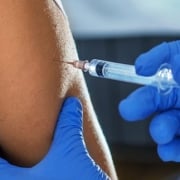Finnish Study Charts Trends in Presentation of Celiac Disease in Children
 Finland provides an unprecedented quality of life for those requiring a gluten-free diet. Excellent awareness among the medical community allows for prompt diagnoses and celiac disease patients are fully supported by their medical care providers. Patient education, ease of access to gluten-free food and government legislation that protects the interests of celiacs makes this country one of the very best places for celiacs to live – and be studied.
Finland provides an unprecedented quality of life for those requiring a gluten-free diet. Excellent awareness among the medical community allows for prompt diagnoses and celiac disease patients are fully supported by their medical care providers. Patient education, ease of access to gluten-free food and government legislation that protects the interests of celiacs makes this country one of the very best places for celiacs to live – and be studied.
 The breadth, depth and quality of research that has taken place in Finland allows today’s researchers to perform retrospective analyses on the data that has been collected to date as a way to identify trends and inform future research.
The breadth, depth and quality of research that has taken place in Finland allows today’s researchers to perform retrospective analyses on the data that has been collected to date as a way to identify trends and inform future research.
“Presentation of Celiac Disease in Finnish Children Is No Longer Changing: A 50-Year Perspective” was in pursuit of trends in the presentation of celiac disease in a large cohort of Finnish children diagnosed over a period of 48 years.
The study was presented orally at the 47th Annual Meeting of the European Society for Pediatric Gastroenterology, Hepatology and Nutrition (ESPGHAN) in June 9-12, 2014, Jerusalem, Israel and offered some interesting insights.
 The Study
The Study
596 children diagnosed with celiac disease between 1966-2013 were divided into four groups, based on the year of diagnosis:
- before 1980
- 1980-1999
- 2000-2009
- 2010-2013
They were compared according to
- Clinical and serologic data
- severity of small-bowel mucosal damage
- presence of associated conditions
The Results
- Age at diagnosis rose from median 4.3 years before 1980 to between 7.6 and 9.0 years in the later periods.
- The severity of clinical presentation, in general, became milder
- poor growth less common during the entire study period of 50 years
- Percentages of children with classical gastrointestinal presentation decreased
- Percentages of children with atypical or subclinical presentation increased after the 1990s, these changes leveling off in 2000-2013.
- Similarly, the severity of small-bowel mucosal damage was milder after the 1990s.
Note: The incidence of celiac disease autoimmunity increased in the early 2000s, based on new antibody-positive cases, but then fluctuated without a clear trend. There were no significant secular changes in sex distribution, presence of anemia, levels of celiac antibodies, or celiac disease-associated conditions.
Conclusions
The clinical and histologic presentation of celiac disease in children became milder, especially in the 1980s and 1990s. However, most of these changes have reached a plateau in recent years.
……….
Studies like the “Presentation of Celiac Disease in Finnish Children Is No Longer Changing: A 50-Year Perspective” lay the groundwork for future research that could inform the medical community – and celiacs – themselves on how they can expect to be diagnosed, treated and even cured in the future.
……….
Researchers: Laura Kivelä, BM, Katri Kaukinen, MD, PhD Marja-Leena Lähdeaho, MD, PhD Heini Huhtala, MSc Merja Ashorn, MD, PhD Tarja Ruuska, MD, PhD Pauliina Hiltunen, MD, PhD Jarmo Visakorpi, MD, PhD Markku Mäki, MD, PhD Kalle Kurppa, MD, PhD












